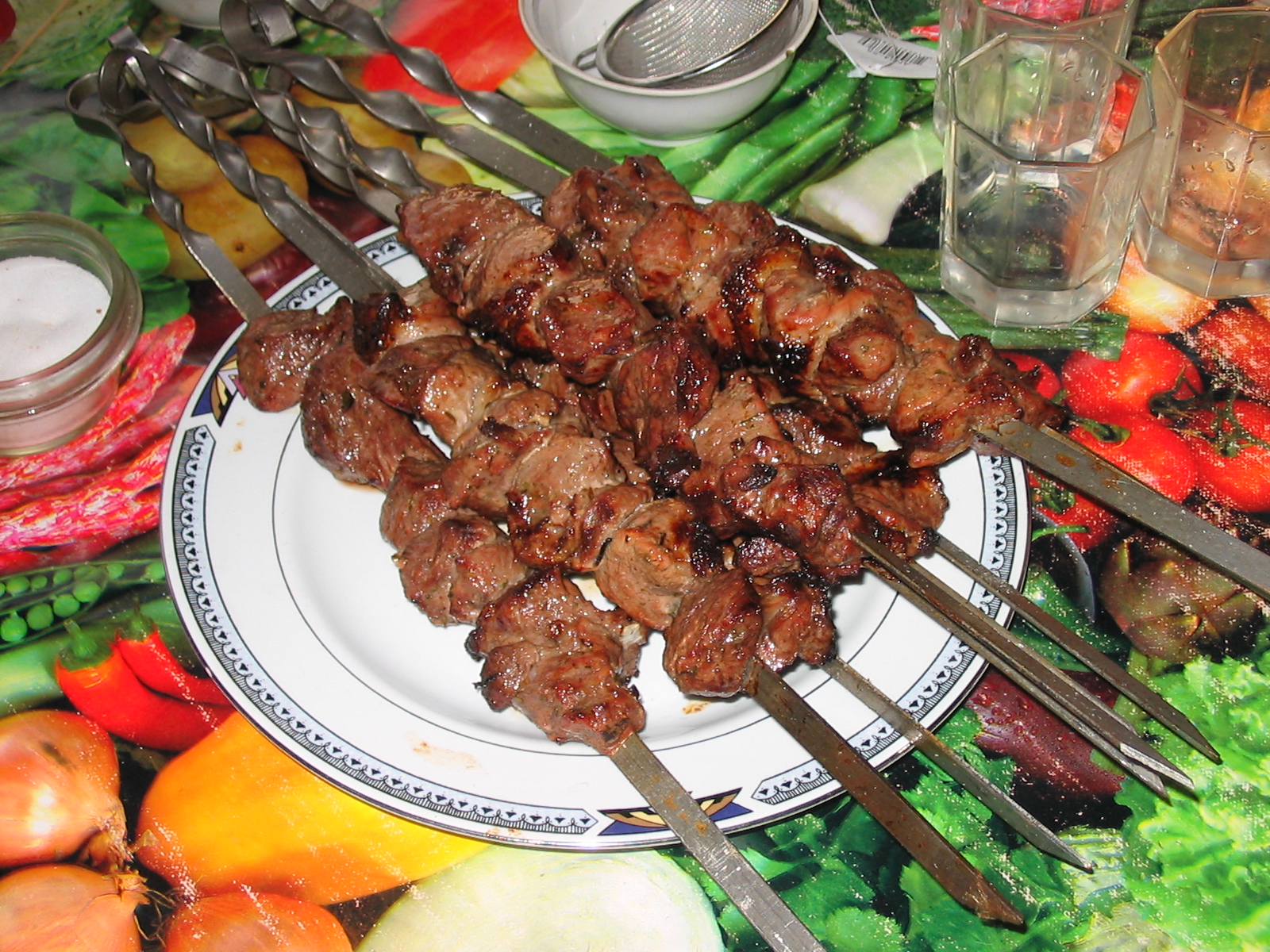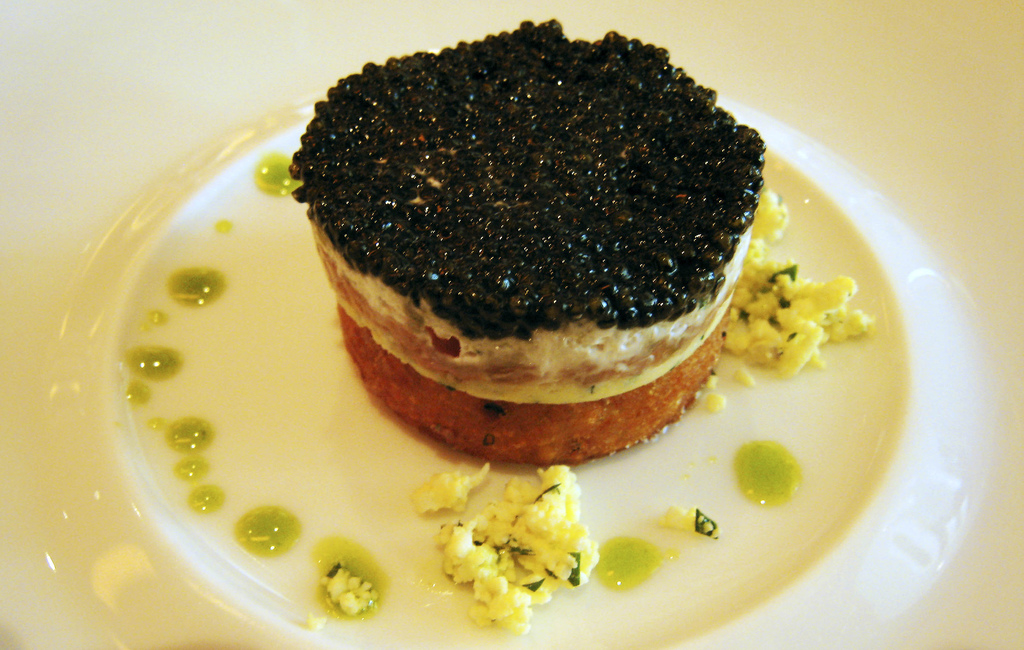|
Makarony Po-flotski
Makarony po-flotski (Russian: ''макароны по-флотски'', ) is a Russian dish made of cooked pasta (typically macaroni, penne or fusilli) mixed with stuffing made of stewed ground meat (usually beef or pork) and fried onions, and seasoned with salt and black pepper. [] Originally served in maritime forces, the dish became popular in Russia due to its simplicity, low cost and short time of preparation. Makarony po-flotski became especially popular after World War II during times of poverty in the Soviet Union. Preparation The pasta is cooked in salted boiling water. The onions are well chopped, while meat is minced. After pouring some oil on the pan, the chopped onions are fried and, after they get a golden color, the meat is added to them to get fried. The stuffing is seasoned with salt and pepper. When the meat is fried and the pasta is cooked, they are mixed together. The dish is usually served without any additions, but can be eaten with pickles. The ground meat ... [...More Info...] [...Related Items...] OR: [Wikipedia] [Google] [Baidu] |
Macaroni
Macaroni (, Italian: maccheroni) is dry pasta shaped like narrow tubes.Oxford DictionaryMacaroni/ref> Made with durum wheat, macaroni is commonly cut in short lengths; curved macaroni may be referred to as elbow macaroni. Some home machines can make macaroni shapes but, like most pasta, macaroni is usually made commercially by large-scale extrusion. The curved shape is created by different speeds of extrusion on opposite sides of the pasta tube as it comes out of the machine. The word "macaroni" is often used synonymously with elbow-shaped macaroni, as it is the variety most often used in macaroni and cheese recipes. In Italy and other countries, the noun ''maccheroni'' can refer to straight, tubular, square-ended ''pasta corta'' ("short-length pasta") or to long pasta dishes, as in ''maccheroni alla chitarra'' and ''frittata di maccheroni'', which are prepared with long pasta like spaghetti. In the United States, federal regulations define three different shapes of dried pa ... [...More Info...] [...Related Items...] OR: [Wikipedia] [Google] [Baidu] |
Black Pepper
Black pepper (''Piper nigrum'') is a flowering vine in the family Piperaceae, cultivated for its fruit, known as a peppercorn, which is usually dried and used as a spice and seasoning. The fruit is a drupe (stonefruit) which is about in diameter (fresh and fully mature), dark red, and contains a stone which encloses a single pepper seed. Peppercorns and the ground pepper derived from them may be described simply as ''pepper'', or more precisely as ''black pepper'' (cooked and dried unripe fruit), ''green pepper'' (dried unripe fruit), or ''white pepper'' (ripe fruit seeds). Black pepper is native to the Malabar Coast of India, and the Malabar pepper is extensively cultivated there and in other tropical regions. Ground, dried, and cooked peppercorns have been used since antiquity, both for flavour and as a traditional medicine. Black pepper is the world's most traded spice, and is one of the most common spices added to cuisines around the world. Its spiciness is due to the ch ... [...More Info...] [...Related Items...] OR: [Wikipedia] [Google] [Baidu] |
Soviet Cuisine
Soviet cuisine, the common cuisine of the Soviet Union, was formed by the integration of the various national cuisines of the Soviet Union, in the course of the formation of the Soviet people. It is characterized by a limited number of ingredients and simplified cooking. This type of cuisine was prevalent in canteens everywhere in the Soviet Union. It became an integral part of household cuisine and was used in parallel with national dishes, particularly in large cities. Generally, Soviet cuisine was shaped by Soviet eating habits and a very limited availability of ingredients in most parts of the USSR. Most dishes were simplifications of French, Russian, Austro- Hungarian cuisines, and cuisines from other Eastern Bloc nations. Caucasian cuisines, particularly Georgian cuisine, contributed as well. Canteens run by the government were called stolovaya. [...More Info...] [...Related Items...] OR: [Wikipedia] [Google] [Baidu] |
List Of Russian Dishes
This is a list of notable dishes found in Russian cuisine. Russian cuisine is a collection of the different cooking traditions of the Russian Empire. The cuisine is diverse, with Northeast European/Baltic, Caucasian, Central Asian, Siberian, East Asian and Middle Eastern influences. Russian cuisine derives its varied character from the vast and multi-ethnic expanse of Russia. Russian dishes Zakuski Soups Salads Meat dishes Pancakes Bread Pirogi (pies) Sauces Desserts Beverages Non-alcoholic drinks Alcoholic drinks See also * Khrushchev dough * Mikoyan cutlet * List of Russian desserts * List of Russian restaurants * Russian candy Russian candy ( fi, kinuski; russian: ки́нуски ''kinuski'') is a very sweet toffee-like dessert made by carefully heating equal amounts of milk or cream and sugar. It is a traditional dessert sauce in Nordic countries. Karl Fazer broug ... References Bibliography * {{DEFAULTSORT:Russian Dishes Lists of ... [...More Info...] [...Related Items...] OR: [Wikipedia] [Google] [Baidu] |
List Of Pasta Dishes
Pasta is a staple food of traditional Italian cuisine, with the first reference dating to 1154 in Sicily. It is also commonly used to refer to the variety of pasta Dish (food), dishes. Pasta is typically a noodle traditionally made from an unleavened dough of durum wheat flour mixed with water and formed into sheets and cut, or extruded into various shapes, then Cooking, cooked and served in a number of dishes. It can be made with flour from other cereals or Food grain, grains, and Egg (food), eggs may be used instead of water. Each traditional pasta dish is defined by a specific List of pasta, kind of pasta, a specific cooking style, and a specific sauce or condiment. There are large number of evolutions and variants of the traditional dishes. Pasta is also often used as a complementary ingredient in some soups, but these are not considered "pasta dishes" (except for the category ''pasta in brodo'' or 'pasta in broth'). The various kinds of pasta are categorized as: ''pasta sec ... [...More Info...] [...Related Items...] OR: [Wikipedia] [Google] [Baidu] |
Spaghetti With Meatballs
Spaghetti and meatballs is an Italian-American dish consisting of spaghetti, tomato sauce and meatballs. Originally inspired by similar dishes from southern Italy, the modern version of spaghetti and meatballs was developed by Italian immigrants in the USA. However, combinations of pasta with meat date back at least to the Middle Ages, and pasta (including long pasta) dishes with tomato sauce and different kinds of meatballs are documented in certain Italian regions and in modern Italian cookbooks as ''maccheroni alle polpette'' (translated as "spaghetti with meatballs") and ''maccheroni alla chitarra con polpette'', though these dishes are often found only in particular regions and towns. They are especially popular in certain areas of Southern Italy, from where most Italian immigrants to the United States emigrated, though generally the version served in Southern Italy features smaller meatballs than the current Italian-American and Italian immigrant version. History Spa ... [...More Info...] [...Related Items...] OR: [Wikipedia] [Google] [Baidu] |
Spaghetti Bolognese
Bolognese sauce (, ; known in Italian as ''ragù alla bolognese'', , ''ragù bolognese'', or simply '' ragù'') is a meat-based sauce in Italian cuisine, typical of the city of Bologna. It is customarily used to dress '' tagliatelle al ragù'' and to prepare '' lasagne alla bolognese''. Italian ''ragù alla bolognese'' is a slowly cooked meat-based sauce, and its preparation involves several techniques, including sweating Perspiration, also known as sweating, is the production of fluids secreted by the sweat glands in the skin of mammals. Two types of sweat glands can be found in humans: eccrine glands and apocrine glands. The eccrine sweat glands are distr ..., sautéing and braising. Ingredients include a characteristic ''soffritto'' of onion, celery and carrot, different types of minced or finely chopped beef, often alongside small amounts of fatty pork. White wine, milk, and a small amount of tomato paste or tomatoes are added, and the dish is then gently ... [...More Info...] [...Related Items...] OR: [Wikipedia] [Google] [Baidu] |





